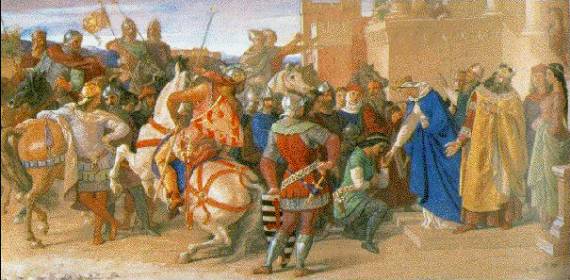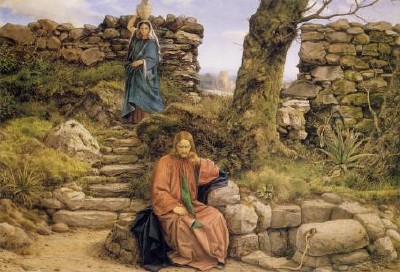William Dyce (1806-1864)
Get a Dyce Certificate of Authenticity for your painting (COA) for your Dyce drawing.
For all your Dyce artworks you need a Certificate of Authenticity (COA) in order to sell, to insure or to donate for a tax deduction.
Getting a Dyce Certificate of Authenticity (COA) is easy. Just send us photos and dimensions and tell us what you know about the origin or history of your Dyce painting or drawing.
If you want to sell your Dyce painting or drawing use our selling services. We offer Dyce selling help, selling advice, private treaty sales and full brokerage.
We have been authenticating Dyce and issuing certificates of authenticity since 2002. We are recognized Dyce experts and Dyce certified appraisers. We issue COAs and appraisals for all Dyce artworks.
Our Dyce paintings and drawings authentications are accepted and respected worldwide.
Each COA is backed by in-depth research and analysis authentication reports.
The Dyce certificates of authenticity we issue are based on solid, reliable and fully referenced art investigations, authentication research, analytical work and forensic studies.
We are available to examine your Dyce painting or drawing anywhere in the world.
You will generally receive your certificates of authenticity and authentication report within two weeks. Some complicated cases with difficult to research Dyce paintings or drawings take longer.
Our clients include Dyce collectors, investors, tax authorities, insurance adjusters, appraisers, valuers, auctioneers, Federal agencies and many law firms.
We perform William Dyce art authentication, appraisal, certificates of authenticity (COA), analysis, research, scientific tests, full art authentications. We will help you sell your William Dyce or we will sell it for you.

William Dyce was a distinguished Scottish artist. Dyce began his career at the Royal Academy schools, and then traveled to Rome for the first time in 1825. While he was there, he studied the works of Titian and Poussin. He returned to Rome in 1827, this time staying for a year and a half, and during this period he appears to have made the acquaintance of the German Nazarene painter Friedrich Overbeck. After these traveles, he settled for a time in Edinburgh, and finally moved to London. He supported himself by painting portraits at first, but soon took to other subjects of art, especially the religious subjects he preferred. Later in his career, he gave himself to fresco-painting, and as a fresco-painter was selected to adorn the walls of the Palace of Westminster. He returned to Italy in 1845-7, in order to observe the fresco techniques employed there in preparation for work at Westminster. He was particularly impressed by Pinturicchio’s frescoes in the Piccolomini Library in Siena, as well as by the works of Perugino.

Dyce was commissioned to decorate the Queen’s Robing Room of the newly completed Palace of Westminster. He chose to illustrate the various Christian virtues in the legend, and had some difficulty adapting the Courtly love of Mallory’s tales to Victorian mores. The Arthurian legend became popular later in the Victorian period, but when Dyce received the commission to decorate the room in 1847, it was still an obscure subject. The legend soon became a major problem for Dyce, as it turns on the unfaithfulness of a queen, which causes the fall of a kingdom. After initially experimenting with a narrative sequence in which the tale would unfold in the room’s panels, Dyce abandoned this in favor of an allegorical approach. In their finished form, Dyce’s frescoes depict scenes from the Arthurian legend that are intended to exemplify the virtues inscribed beneath them. The actions of the figures in his frescoes appear to the modern viewer to convey qualities whose status as virtues is uncertain, and the connection between the episodes from the Arthurian legend and the virtues they represent is sometimes difficult to discern. The virtues depicted are mercy, hospitality, generosity, religion, and courtesy. Two projected frescoes, Courage and Fidelity, were never executed.

The largest collection of William Dyce’s work is displayed at Aberdeen Art Gallery, Scotland. Still wondering about a 19th century Scottish painting in your family collection? Contact us…it could be by William Dyce.
